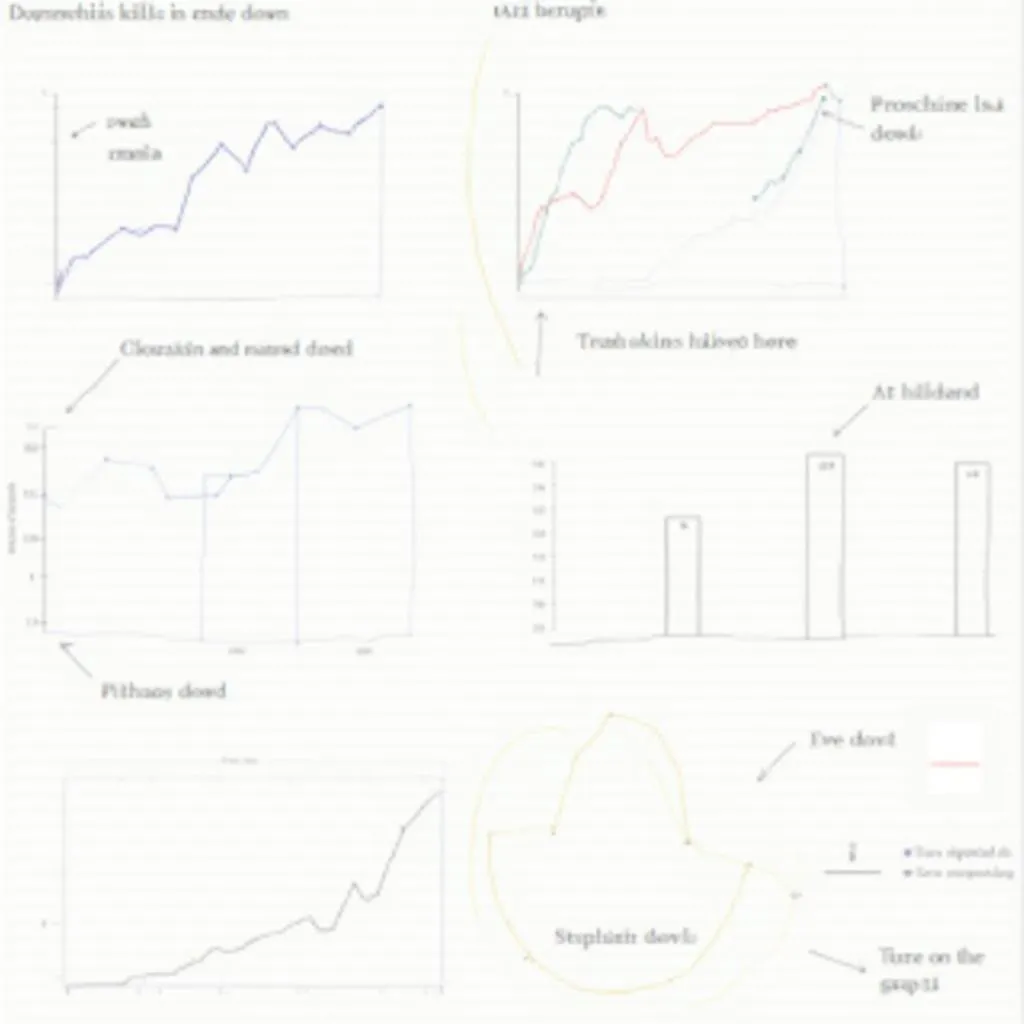Understanding the Importance of Trend Description
Describing trends accurately is a crucial skill for success in IELTS Writing Task 1. This task requires candidates to interpret and explain visual information, often in the form of graphs, charts, or tables. Mastering trend description allows you to effectively communicate data changes over time, compare different categories, and highlight significant patterns.

Key Vocabulary for Describing Trends
Verbs for Trend Description
To accurately describe trends, it’s essential to use a variety of appropriate verbs. Here are some common verbs used in trend description:
- Increase: rise, grow, climb, surge, soar
- Decrease: fall, decline, drop, plummet, plunge
- Remain stable: stabilize, level off, plateau, remain constant
Example: “The number of international students in UK universities rose steadily from 2010 to 2020.”
Adverbs for Trend Description
Adverbs help to convey the speed or degree of change in a trend. Some useful adverbs include:
- Gradually, slowly, steadily
- Rapidly, sharply, dramatically
- Slightly, marginally, minimally
Example: “Coffee consumption in Italy decreased gradually over the past decade.”
Analyzing Different Types of Trends
Upward Trends
When describing an upward trend, focus on the rate of increase and any notable patterns. Use phrases such as:
- “There was a steady increase in…”
- “… showed a sharp rise between X and Y.”
- “… experienced gradual growth over the period.”
Downward Trends
For downward trends, highlight the rate of decline and any significant points. Useful phrases include:
- “… saw a steep decline from X to Y.”
- “There was a gradual decrease in…”
- “… fell dramatically over the given period.”
Fluctuating Trends
When trends show variations, describe the overall pattern and notable fluctuations:
- “The graph shows considerable fluctuations in…”
- “… experienced several peaks and troughs over the period.”
- “Despite some fluctuations, the overall trend was upward/downward.”
Stable Trends
For trends that remain relatively constant, use phrases like:
- “… remained stable throughout the period.”
- “There were no significant changes in…”
- “… maintained a consistent level between X and Y.”
Structuring Your Response
To effectively describe trends in IELTS Writing Task 1, follow this structure:
- Introduction: Briefly summarize the main features of the visual information.
- Overview: Provide a general statement about the main trends or patterns.
- Detailed description: Analyze specific data points and trends, grouping similar information together.
- Conclusion: Summarize the key points without introducing new information.
Example introduction: “The line graph illustrates the changes in coffee consumption in four European countries from 2000 to 2020.”
Common Pitfalls to Avoid
When describing trends, be careful to avoid these common mistakes:
- Overuse of the same vocabulary: Vary your language to demonstrate a wide range of expression.
- Describing every data point: Focus on significant trends and patterns rather than every minor detail.
- Neglecting the overview: Always include a clear overview paragraph summarizing the main trends.
- Using personal opinions: Stick to objective descriptions of the data presented.
Practice Exercises
To improve your trend description skills, try these exercises:
- Analyze news articles featuring graphs or charts, and practice describing the trends in writing.
- Create your own graphs based on everyday data (e.g., daily temperature, study hours) and describe the trends.
- Time yourself describing trends in sample IELTS Task 1 questions to improve speed and accuracy.
Remember, mastering trend description takes practice. Regular exercise and exposure to various types of visual data will help you become more confident and proficient in this essential IELTS Writing Task 1 skill.
By following these guidelines and practicing regularly, you’ll be well-prepared to effectively describe trends in IELTS Writing Task 1. Focus on accuracy, variety in vocabulary, and clear structure to maximize your score in this important component of the IELTS exam.